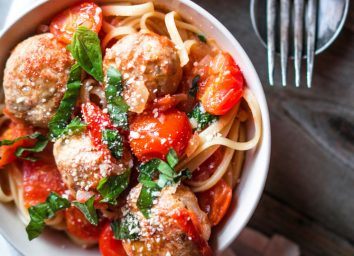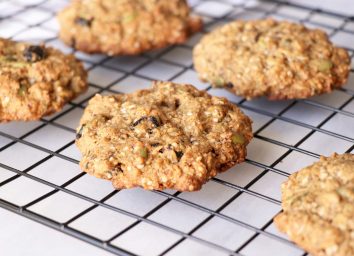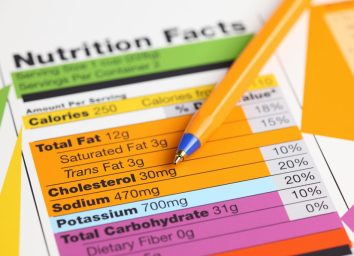The Best Nutrition Tips from 2020
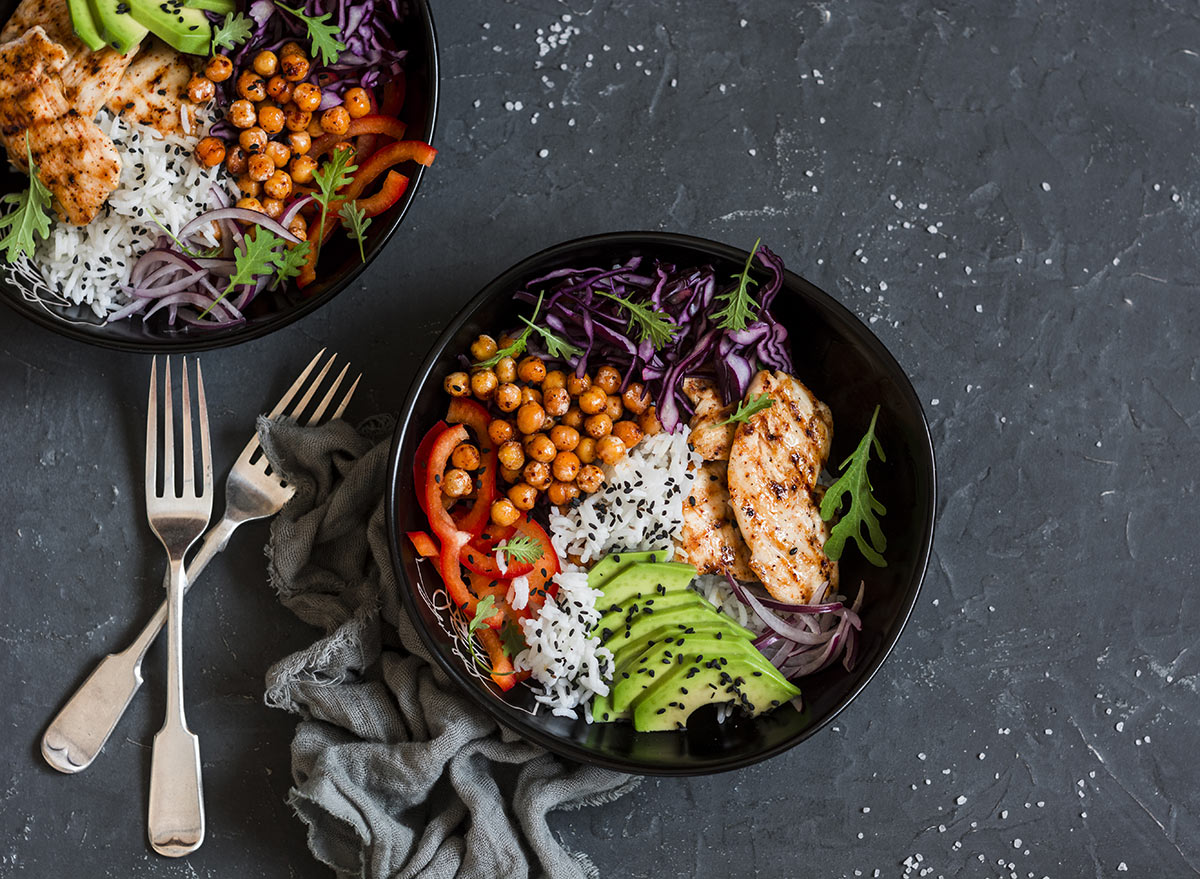
There’s no denying that this year has been a difficult one. Between a massive worldwide quarantine and drastic changes happening around the country in grocery stores, shopping centers, and even in your own home, it can feel incredibly challenging to keep up with healthy habits throughout the day. However, thanks to some insightful nutrition experts, registered dietitians, and doctors, we gathered a lot of incredible nutrition advice in 2020, which is why we decided to round up the best nutrition tips we heard.
So if you’re looking to change your ways and adopt healthy habits come 2021, here are the best of the best nutrition tips we received this year. And for more healthy eating tips, be sure to check out our list of The 7 Healthiest Foods to Eat Right Now.
Make sure all of your meals include carbohydrates, protein, healthy fat, and fiber.
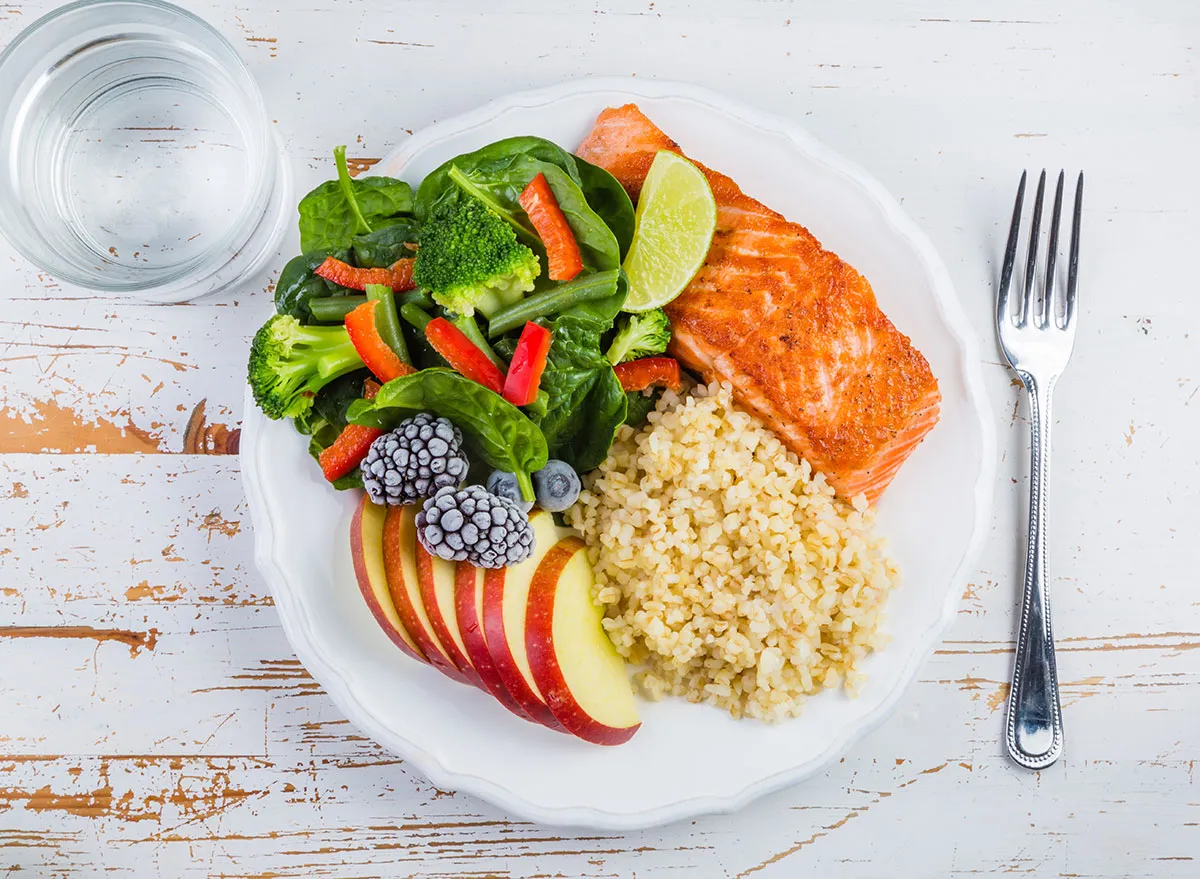
“These things will help keep you fuller for longer, help prevent mindless snacking, and help set the tone for your meals and snacks the rest of the day,” Maggie Michalczyk, RDN and founder of Once Upon A Pumpkin, who recently published The Great Big Pumpkin Cookbook. “Studies have even shown that people who ate a bigger breakfast tended to weigh less, so don’t fear eating a substantial breakfast. You’ll also feel energized and ready to tackle a workout or a project better when fueled up properly.”
Add protein to your smoothie.
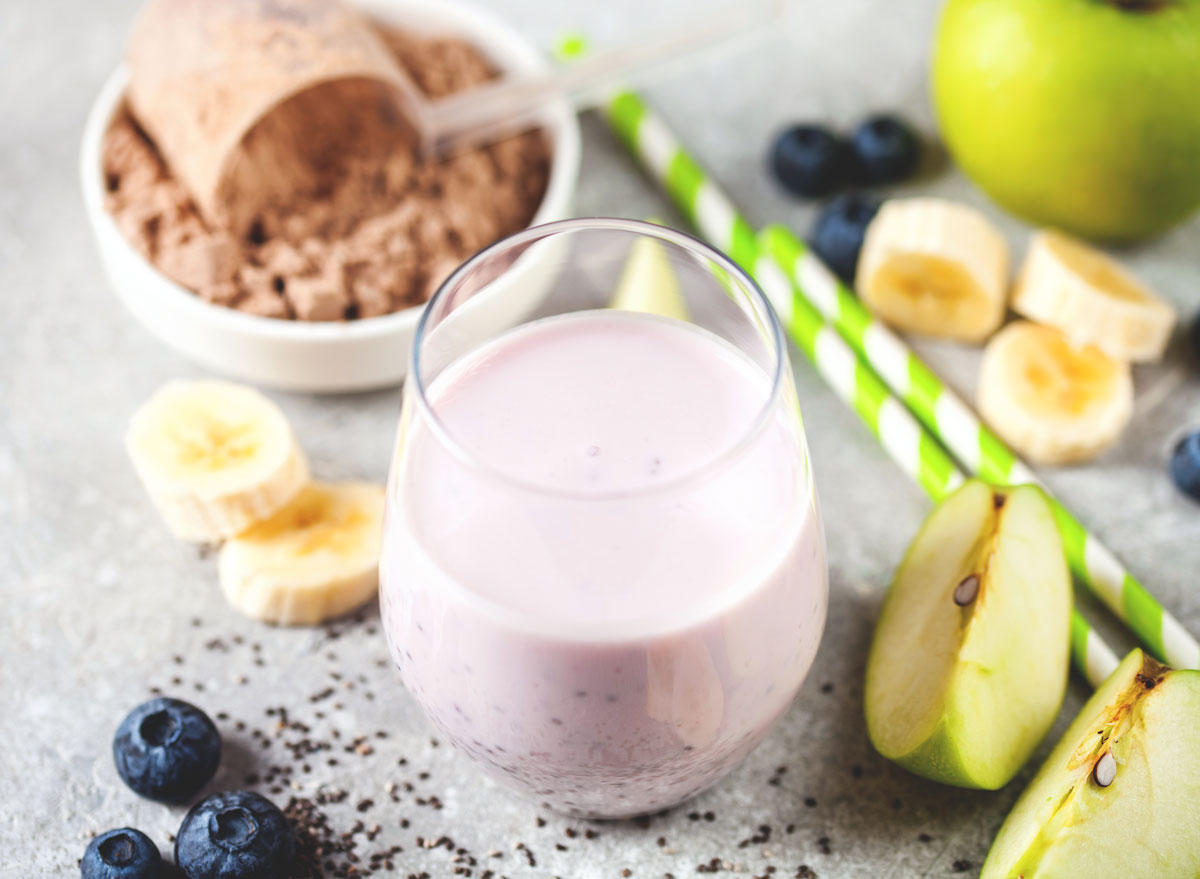
“The science is well established that, in general, protein is more satiating than the same amount of carbohydrate or fat,” says Amy Goodson, MS, RD, CSSD, LD, and author of The Sports Nutrition Playbook. “I like to say protein helps you feel full faster and helps you stay full longer.”
Goodson recommends adding protein in the form of Greek yogurt—for the calcium—or protein powder. You can try one of these Best Greek Yogurts, According to Nutritionists.
Use a simple formula for every meal.
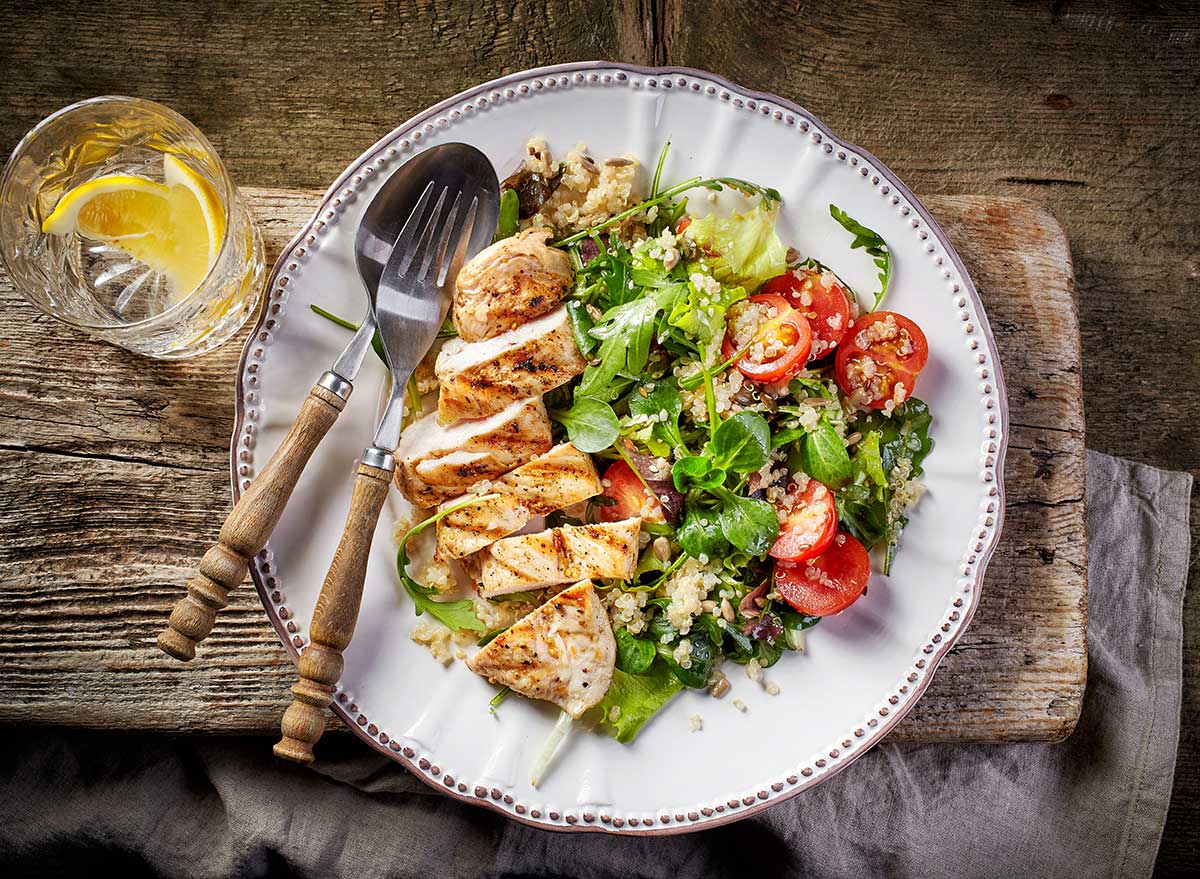
“Try to build your meals and snacks around a vegetable, protein, and source of starch,” says Casey Seiden MS, RD, CDN, DCES. “When possible try to order and purchase complex sources of carbohydrates, so think whole wheat or chickpea-based pasta, brown rice, beans, quinoa, farro, or oatmeal. All types of vegetables can work- fresh, canned, and frozen! For proteins, freezing chicken, turkey burgers, beef, and fish is a good way to preserve fresh purchases, but having eggs, cheeses, and canned fish can be excellent sources as well.”
For more insights, check out our list of Top 15 Nutrition Tips During Quarantine.
Treat your snack as a meal.
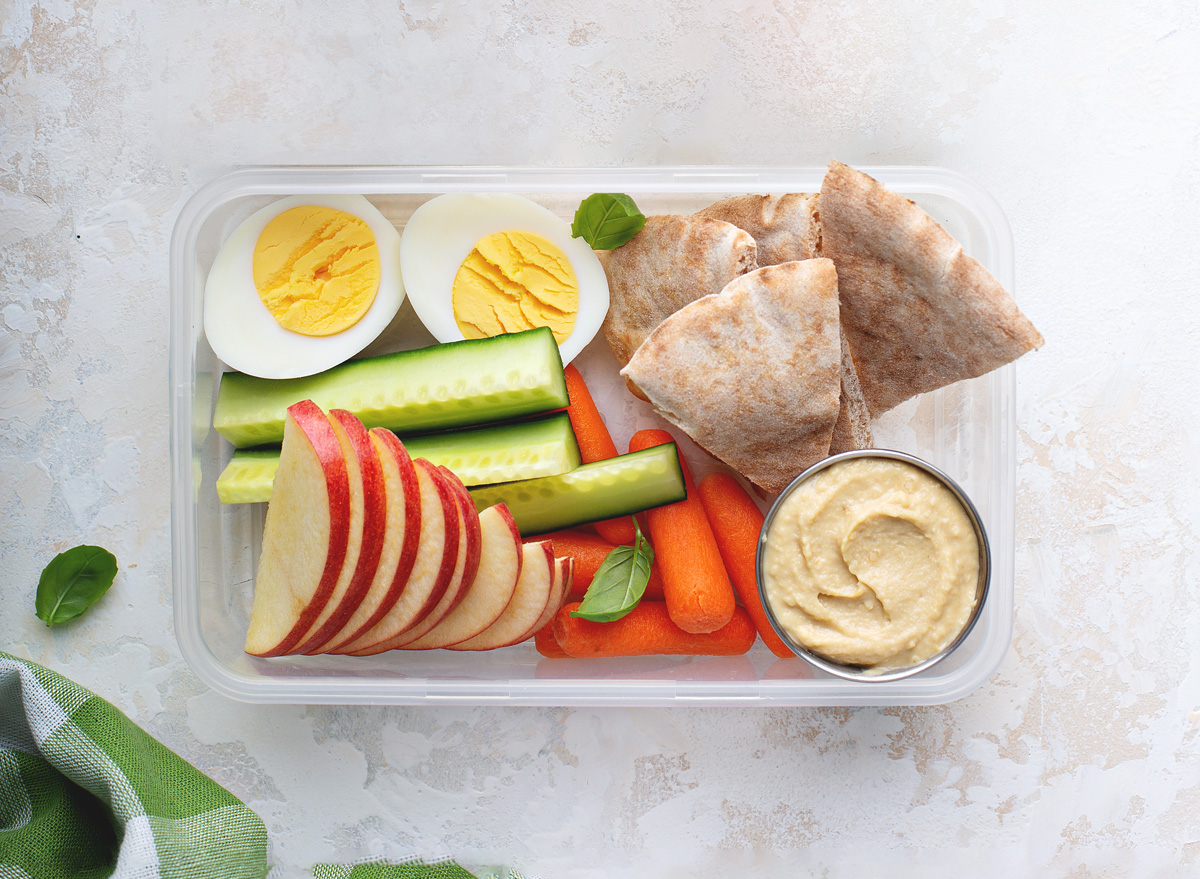
“One reason snacking gets a bad rap is because of mindless munching and lack of portion control,” says Dr. Tonya Sweezer, DO, ND. “We are often snacking because we don’t have time for a full meal, so we are too distracted to keep track of our intake.”
Sweezer recommends selecting snack items in advance before your hunger messes with the judgment around your food choices. Having a snack prepared will help with overeating.
“Healthy snacks such as chopped veggies, nuts or fruit should be easily accessible,” says Sweezer. “This way you are less likely to reach for unhealthy items. Choosing healthier items helps to reduce cravings and keep you on track.”
Next time you want a snack, check out our list of 7 Healthy Snacking Habits for a Flat Belly.
Eat every 3 to 4 hours to keep your blood sugar stable.
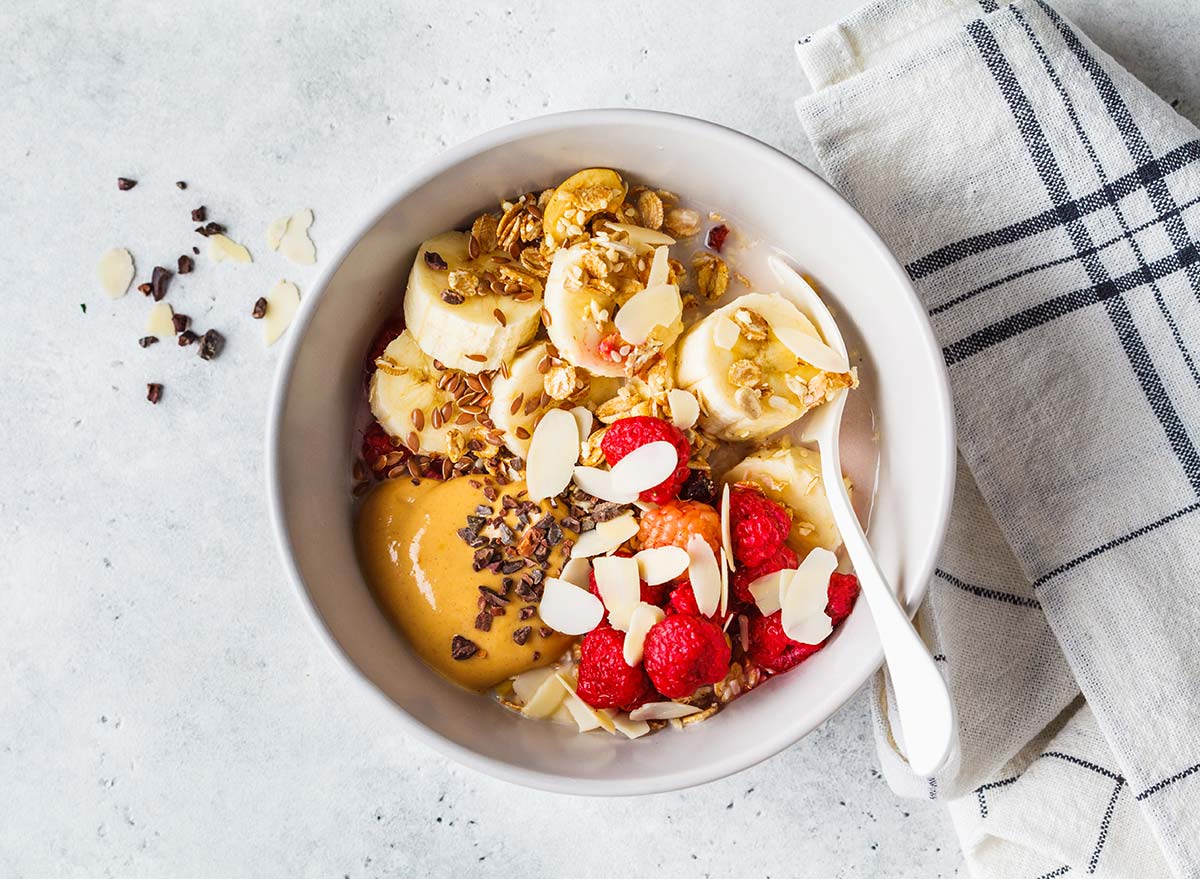
“It’s a good idea to eat every 3 to 4 hours to keep blood sugars stable, which not only prevents hunger-related crankiness (‘hanger’) but can help prevent overeating at the next meal,” says Jean Hanks, MS, RDN, CDN from Bethany Medical Clinic of NY. “So ideally, you would have a snack between breakfast and lunch, and between lunch and dinner.”
Add colors to your plate.
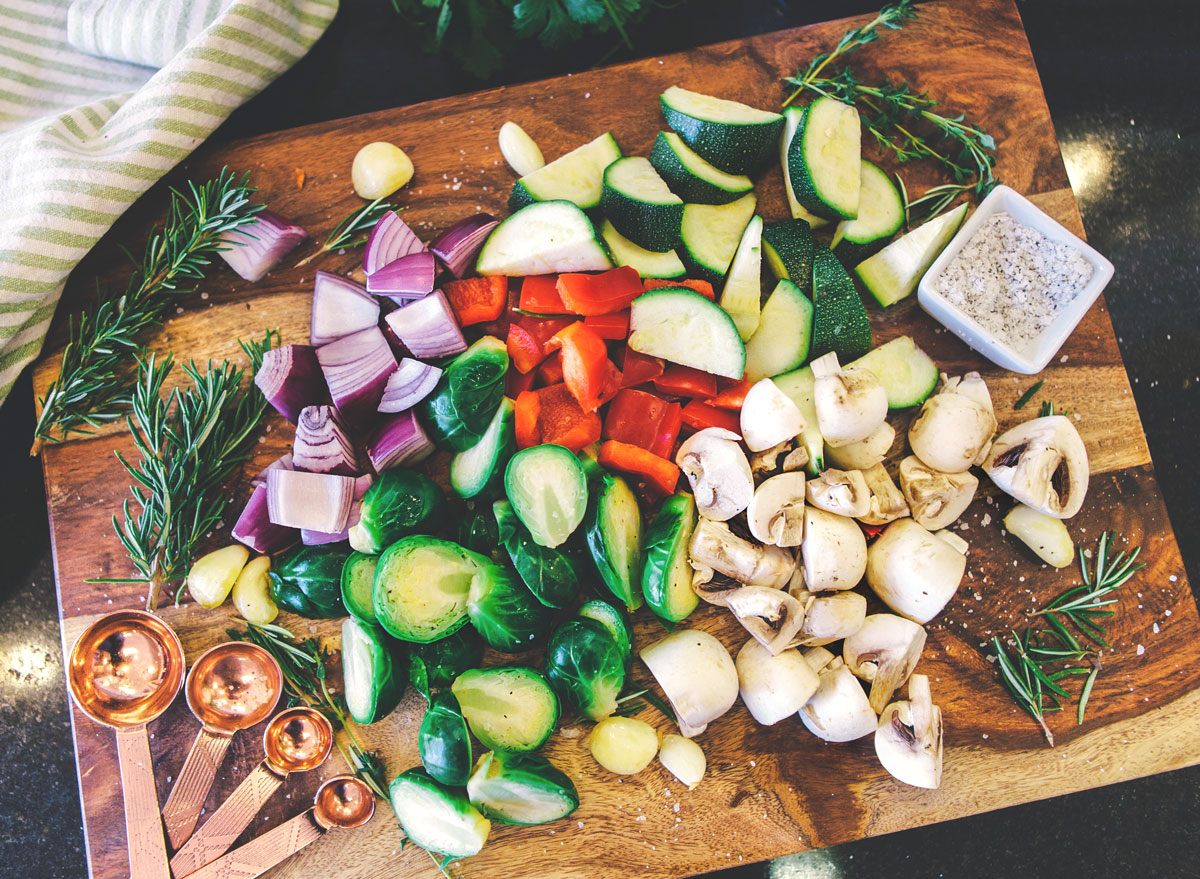
Adding color in your meals ensures that you’ll get a variety of vitamins and minerals from your meals, especially dietary fiber which can help you to feel full. Lisa Young, PhD, RDN, and author of Finally Full, Finally Slim, says an easy way to do this is to enjoy a healthy salad or even a fruit salad.
Here’s why fiber is The #1 Thing To Eat Every Day To Lose Weight For Good.
Listen to your body.
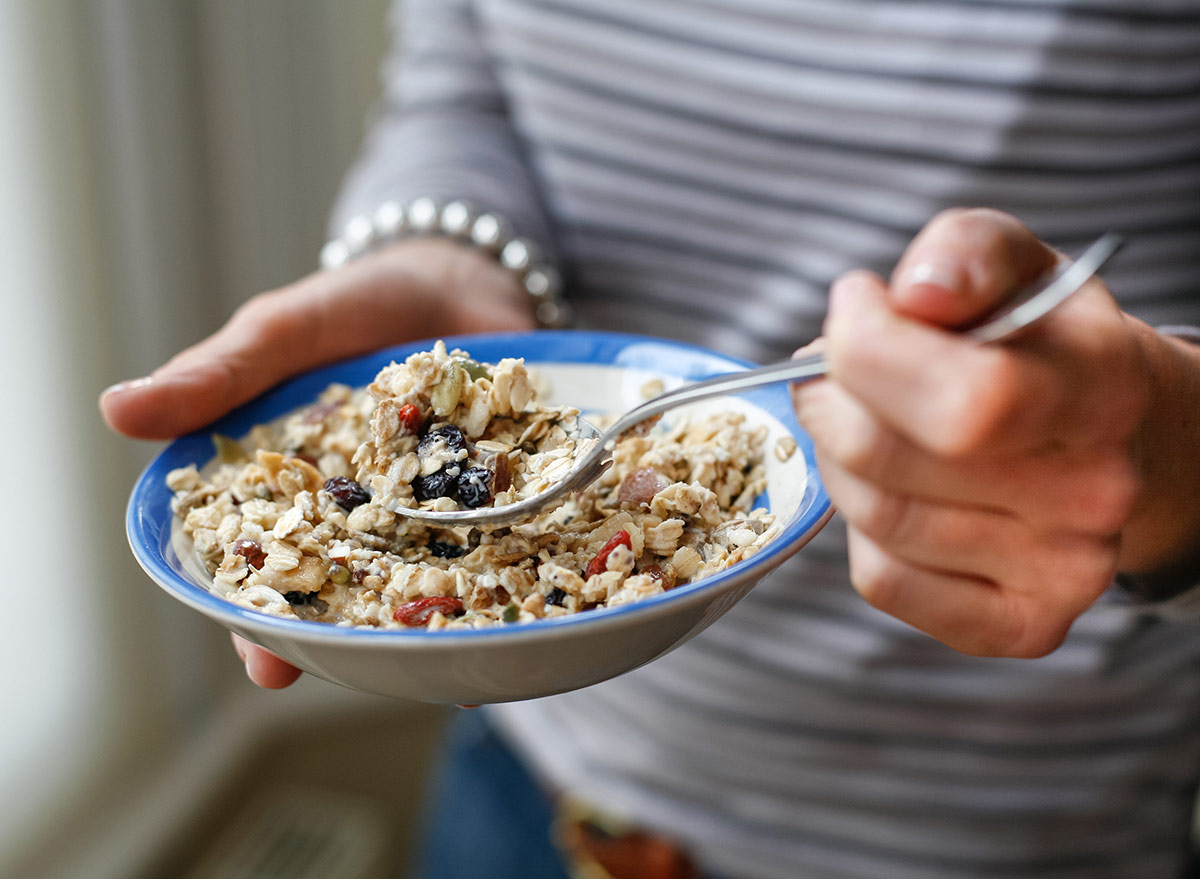
“Listen to their bodies! For too long we’re taught to rely on external tools like meal plans, time of day, calories, and points systems. This can create distrust and disconnect from our bodies,” says Katherine Kimber, RD. “A good place to start is to let natural hunger signals lead the way when deciding when to eat. Quite often people know what it feels like to get super hungry, and super stuffed, but struggle with the subtleties in the middle.”
Kimber suggests looking for certain hunger cues that may not seem like hunger cues, which can include your mood, energy levels, headaches (or even poor concentration), stomach aches, and even body cues like salivating and feeling like your blood sugar is low.
Eat a variety of foods.
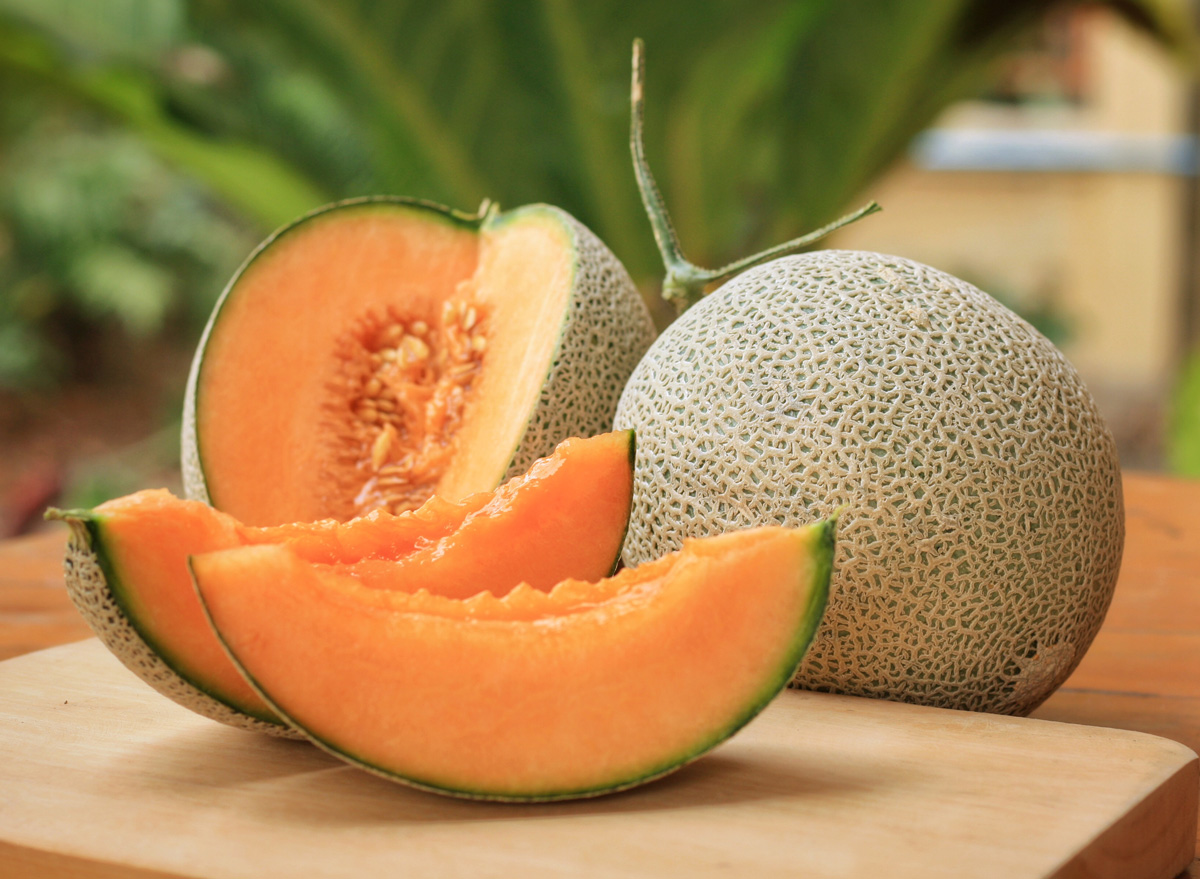
“Within each of the food groups, women should consume a variety,” says Jinan Banna, PhD, RD. “This means not always eating blueberries as your serving of fruit, but sometimes choosing cantaloupe, watermelon, or dragon fruit. All contain different nutrients the body needs. It’s easy to get stuck in a food rut if one is caring for children or aging parents and is short on time, but it’s important to be creative and buy different foods to make sure the body gets everything it needs.”
Here’s The #1 Fruit Hack for Maximum Weight Loss.
Workout in the morning—then fuel your body properly.
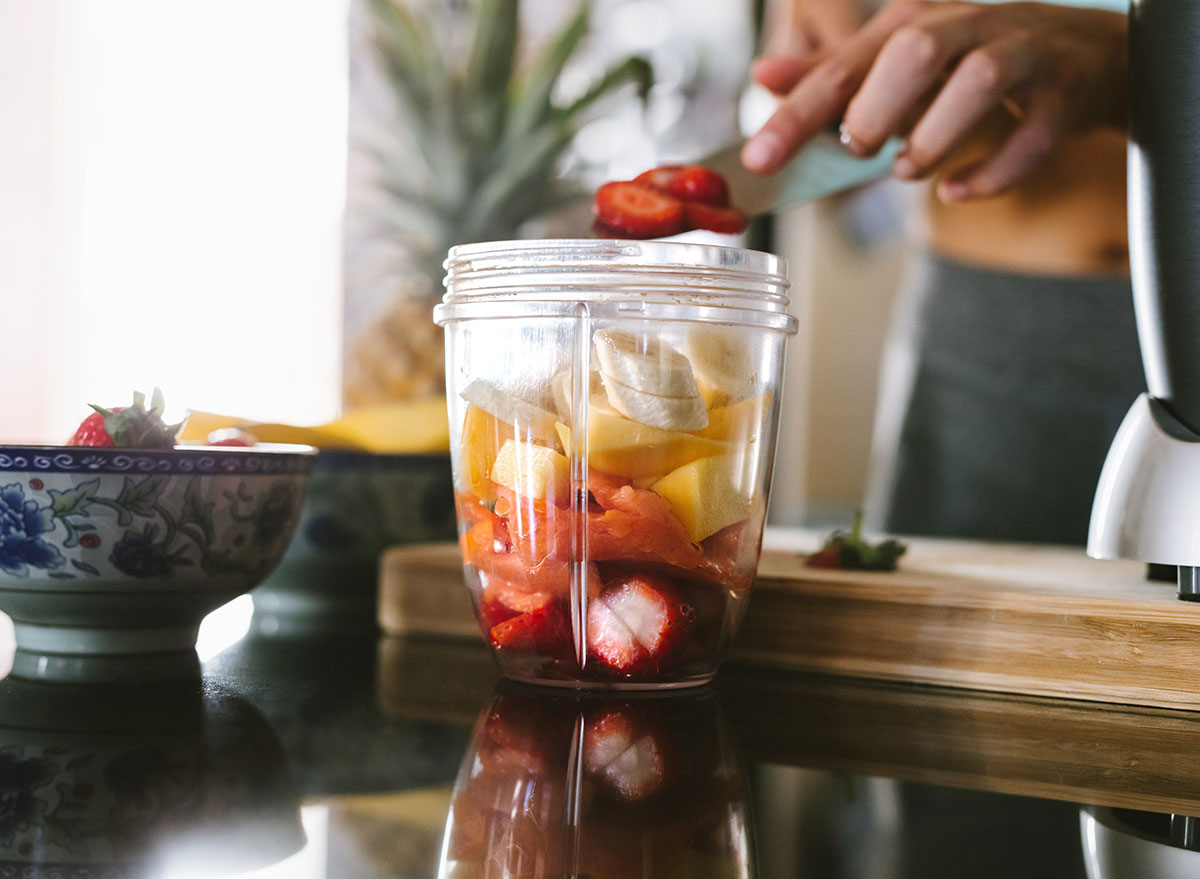
According to a study published by the International Journal of Obesity, working out in the morning can result in significant weight loss compared to working out later in the day. The best part? That workout doesn’t have to be massively intense. Simply getting your body moving can result in a change in your mindset, and even your eating patterns, for the rest of the day.
It’s also important to fuel your body after a workout, so you don’t feel ravenous throughout the day. Brianna Bernard, Personal Trainer, Nutrition Coach, and Isopure Ambassador, says one of the best post-workout habits is to refuel with a nutrient-rich meal that includes lean protein, healthy fat, and complex carbohydrates. This means looking for all of these nutrients in your post-workout breakfast. A great example of this is enjoying a slice of sprouted toast with smashed avocado and a fried egg on top.
Focus on the magical three.
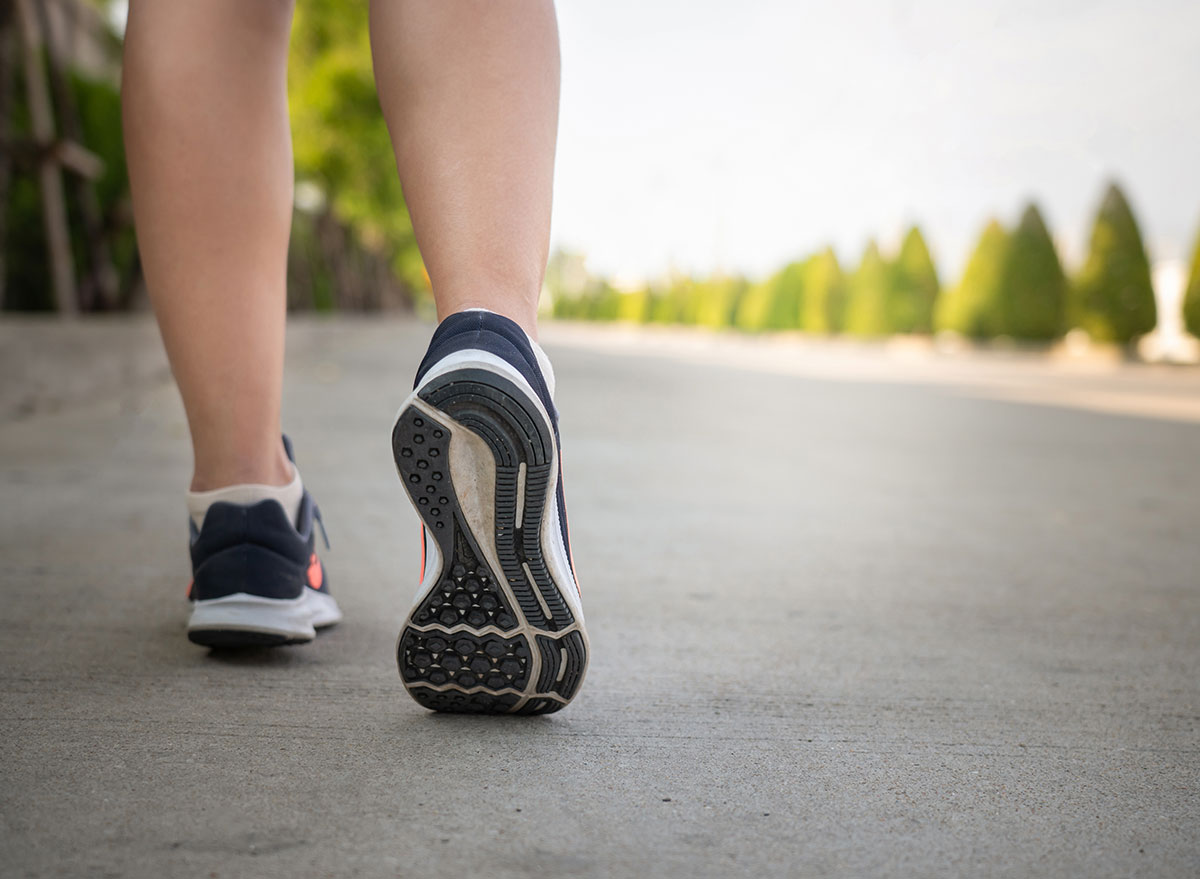
If you want to lose weight for good, Dr. Amy Lee, Head of Nutrition for Nucific says it’s not only about eating healthy, but also focusing on what she refers to as “the magical three.”
“If you are unwilling to address the three things in life that contribute to abnormal weight gain—nutrition, the movement, and the stress management—then you will never succeed in losing weight, let alone maintaining it for life,” says Dr. Lee.
Eating nutritious meals, moving your body, and maintaining stress really do all go hand-in-hand. Research shows that moving your body can help with your overall stress throughout the day, and it can even help motivate you to eat healthier meals. There’s even research to show that nutritious meals can help reduce your cortisol levels, which is your stress hormone.
Don’t attach emotions to food—like saying healthy foods are “boring.”
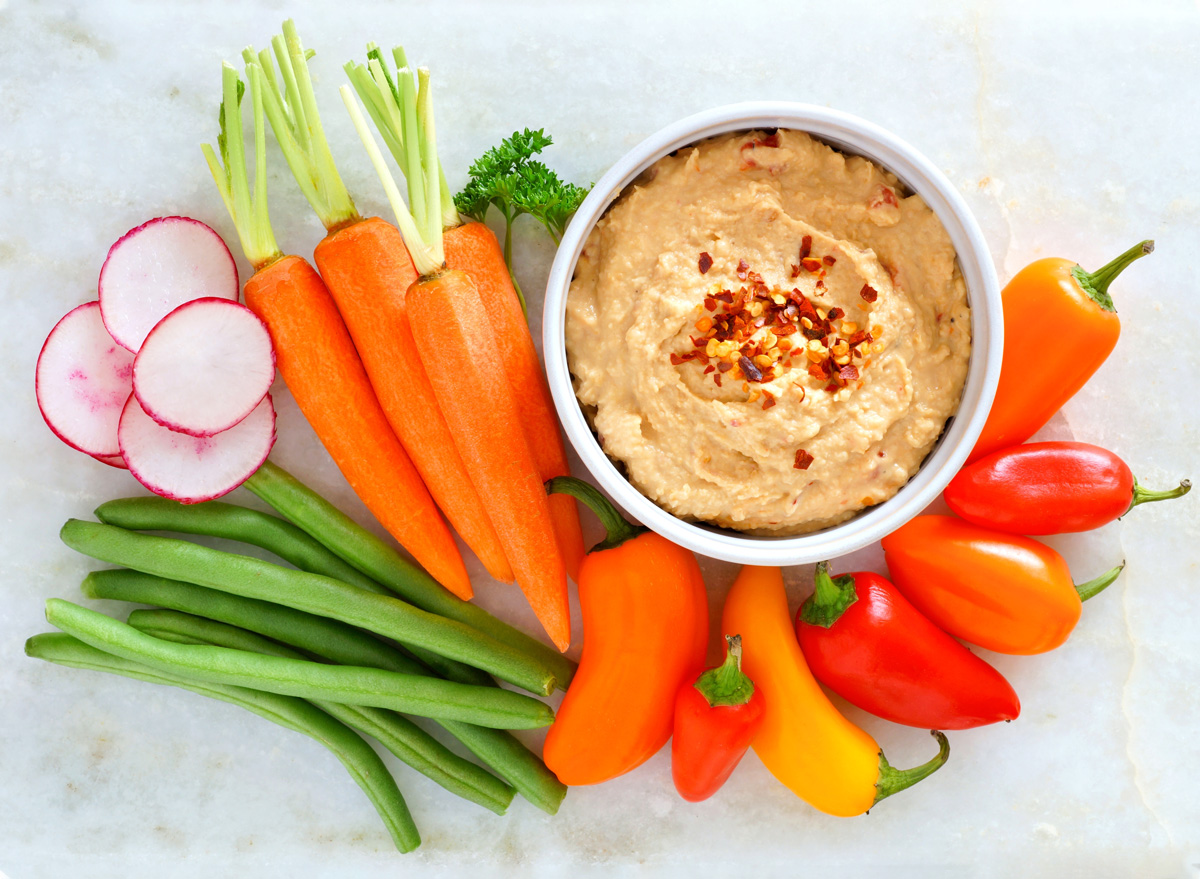
“Do not relate healthy foods as boring as an emotion because the moment that you do, you will set yourself up for sabotage on days when you are down or stressed,” says Dr. Lee.
By setting emotions for your food, you’re creating barriers for yourself. If you deem certain foods “good” or “bad” or “boring” or “fun,” you’ll experience mental barriers later down the line. But if you break those barriers and simply let all food be food, you’ll find yourself moving into what is known as intuitive eating—a practice where you let your body intuitively eat what it craves. It also gives you room to actually crave and enjoy those “healthy” foods that you may have deemed boring before, instead of despising them and only enjoying those “fun” foods.
Plan out your meals.
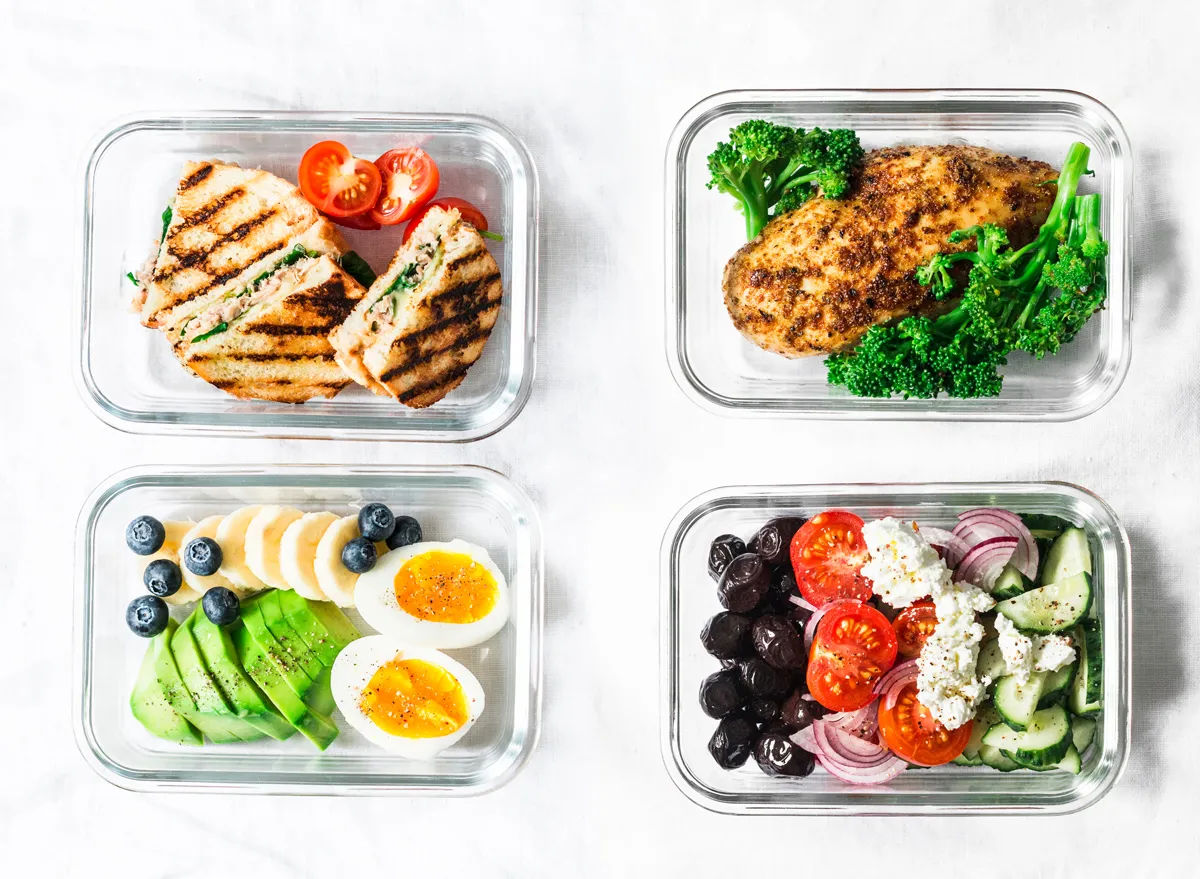
Having a plan not only helps you avoid unnecessary purchases at the grocery store, but it also guides you with healthy meals throughout the week that you don’t have to think twice about.
“I always recommend working towards planning being a habit, which doesn’t have to mean prepping everything in advance,” says Kelly Jones, MS, RD, CSSD, and nutrition consultant for The Little Potato Company. “Simply knowing you have the components for a balanced meal, including vegetables, a high-quality starch, a protein source, and some healthy fat, can take a lot of stress away.”
Add fruits or veggies to every meal.
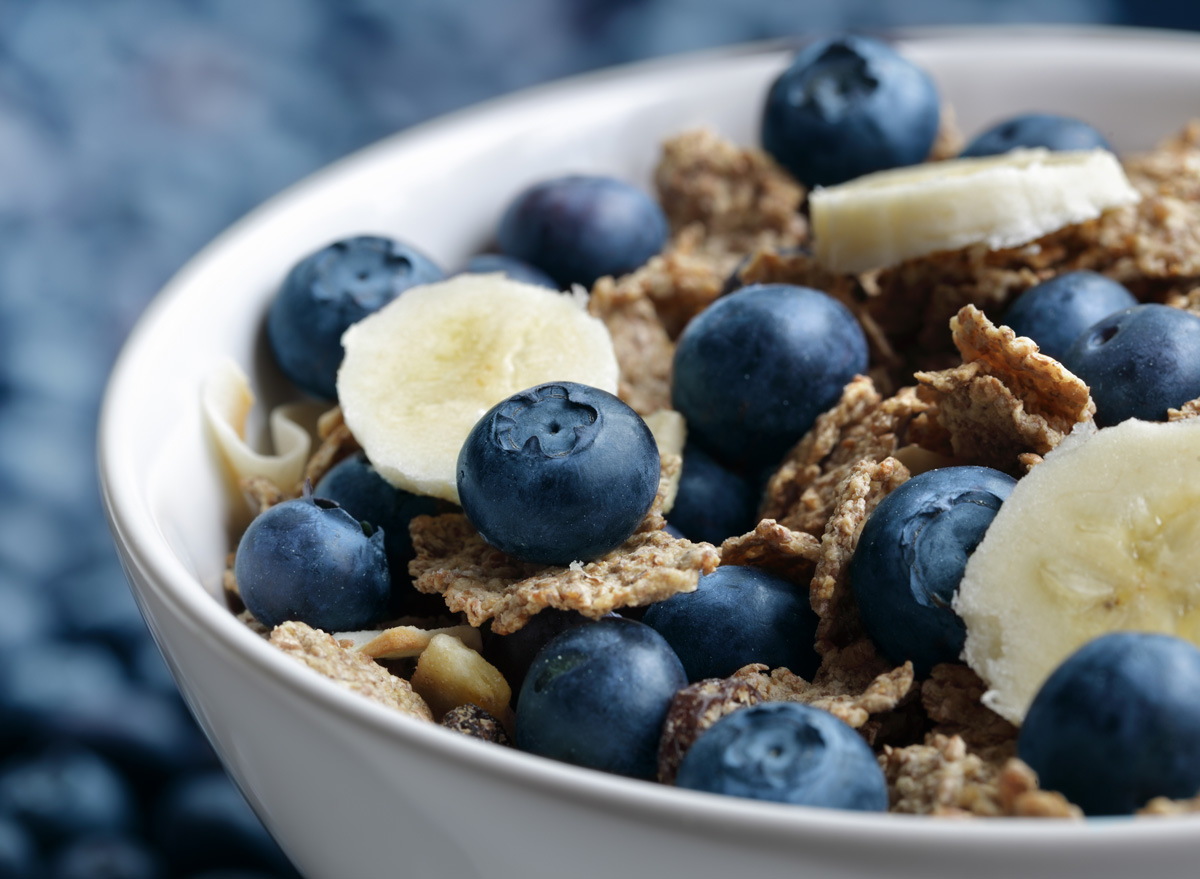
By adding a simple serving of fruit or vegetables to your breakfast, you are boosting the amount of fiber in your meal. Given that the average person does not get enough fiber in their diet—which actually helps with weight management—it’s important to find ways to add even more fiber into your meals. This simple breakfast hack can make it easy to do so.
“Foods with fiber like fruits, veggies, nuts seeds, and whole grains are great for digestion (and they help to keep you fuller for longer) which can help alleviate some of that [belly] bloat,” says Michalczyk. “I love incorporating fruit for more fiber at breakfast—I’m talking berries or sliced bananas on my oatmeal or on the side of eggs, etc.”
Stock your pantry and freezer.
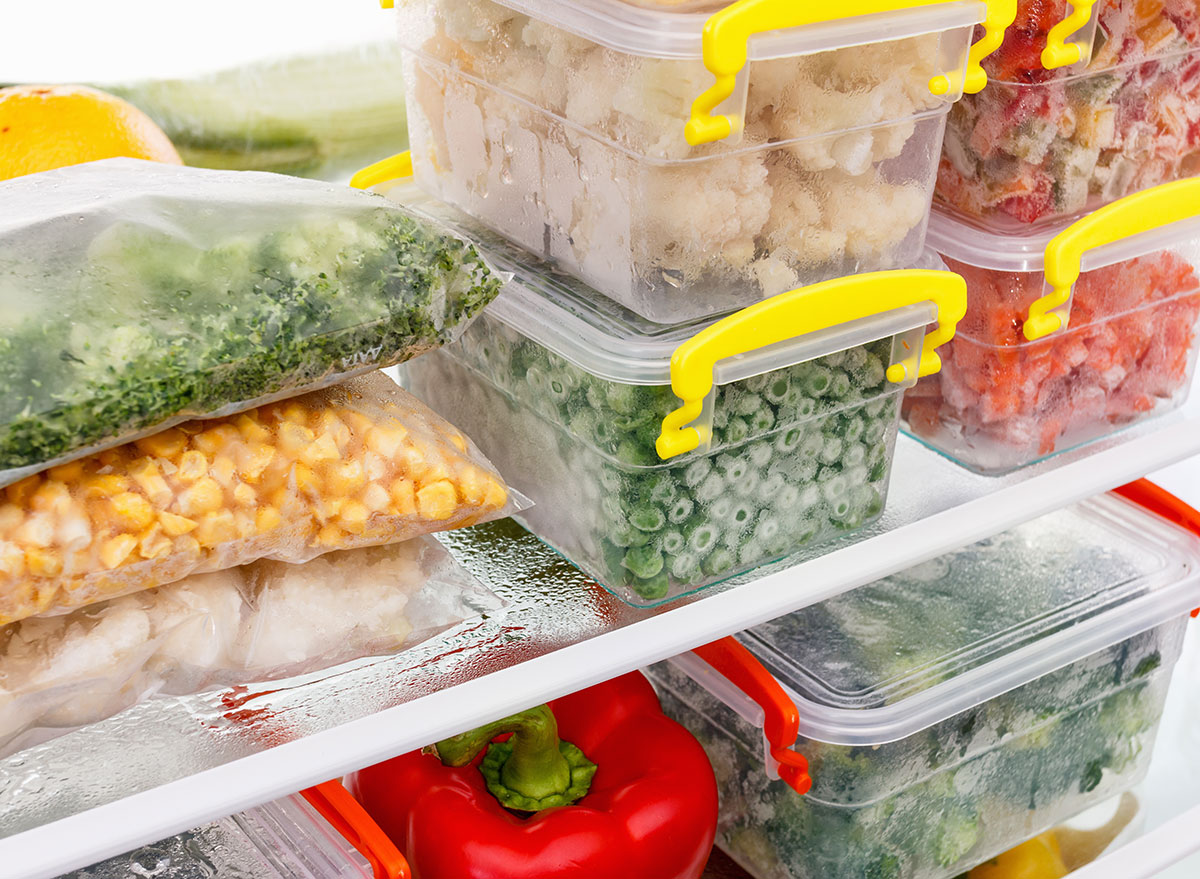
Make it easier for yourself during the week by stocking up your pantry and freezer with a few healthy ingredients—like these 20 Healthy Pantry Staples That Belong in Every Kitchen.
“We all have weeks that we can’t get our grocery trip in, but that can add a lot of stress to mealtime,” says Jones. “By having shelf-stable starches and proteins as well as frozen vegetables on hand, you can always pull together a staple meal. Think rice, potatoes. and wheat pasta for starch, beans, lentils, and canned tuna for protein, and whatever frozen vegetables your family loves.”
Yes, eat dessert! And add fruit.
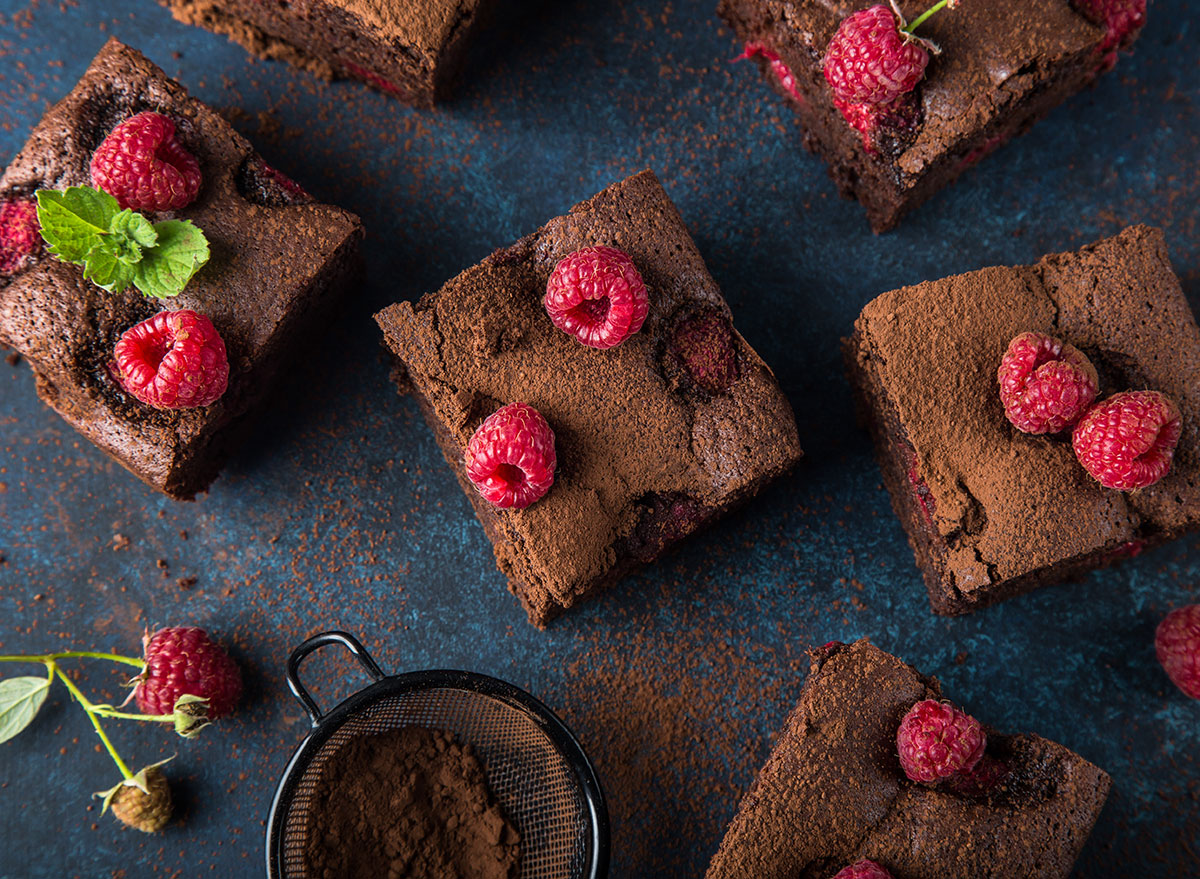
While there are a lot of healthy dessert options out there, Rachel Paul, PhD, RD from CollegeNutritionist.com, recommends choosing something you really want to eat. An easy way to find this out is to simply ask yourself what dessert is “worth it” for you.
“I personally prefer ice cream or candy for my dessert versus a healthier fruit option,” says Paul. “But another person could love a fruit-based dessert and be totally satisfied with that. Choose what’s worth it to you.”
Paul also recommends adding fruit for an easy way to boost the nutritional value of your dessert. Fruit can provide your body with a lot of great nutrients (including fiber!) and will also create your dessert into a filling snack. Enjoying a fudgy brownie? Add 1/2 cup of raspberries on the side to round out your sweet treat, and boost the fiber content. You could even top fruit on some of your favorite desserts like bread pudding, cake, pie, and many more.
A few desserts Paul recommends include sliced up banana with peanut butter and a few chocolate chips, or even sliced strawberries topped with whipped cream. Or try this Strawberry Mascarpone Cup!
Eat nutrient-dense breakfasts during the week, and save “fun” meals for the weekend.
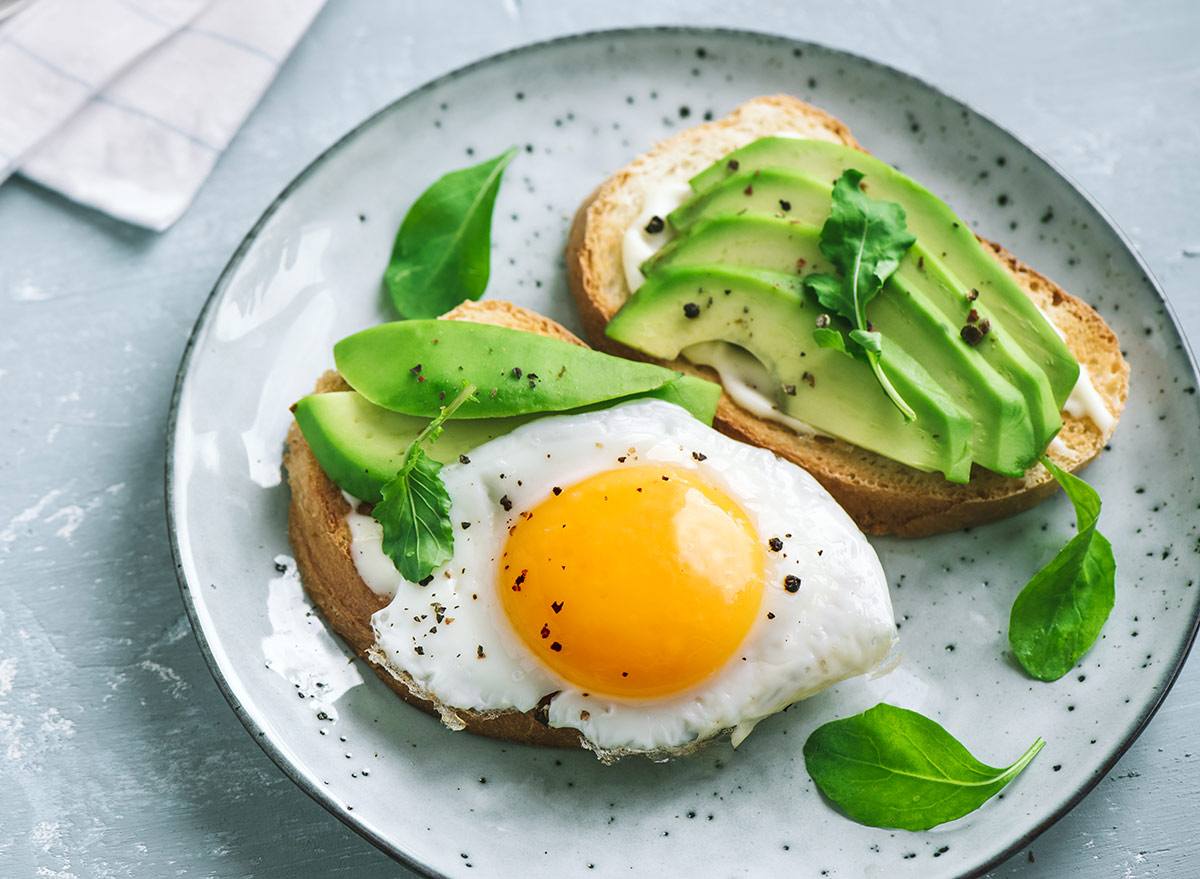
When it comes to planning out your breakfasts for the week, look to make your breakfasts nutrient-dense. Following that easy first rule to add a protein, a healthy fat, and a carb to your meal can make this a lot easier.
“I’m not saying there aren’t exceptions to the rule, (because sometimes pancakes for dinner sound good, too), but I think fueling your morning to feel your best during the week is important and really sets your whole day up for success,” says Michalczyk. “I like to save fun breakfasts like pancakes, waffles, and crepes, for slower weekend mornings and aim to get a slightly more nutrient-dense breakfast every day of the week.”
Here are 7 Healthy Breakfast Habits for a Flat Belly.
Drink the proper amount of water each day.

The easiest way to calculate the amount of water you should be drinking is to divide your body weight in half.
“Divide your body weight [number] in half, and that’s how many ounces you should have a day,” Brianne Munch, a certified personal trainer and author of the e-book B-Fit: The Ultimate Macro Tracking Guide. “So I weigh 140, which means I should drink 70 ounces a day. Which is about three and a half water bottles worth of water. [Drinking water] gets your metabolism going, it starts fueling your body, it even gets you hydrated and wakes you up.”
Put your oil in a spray bottle.
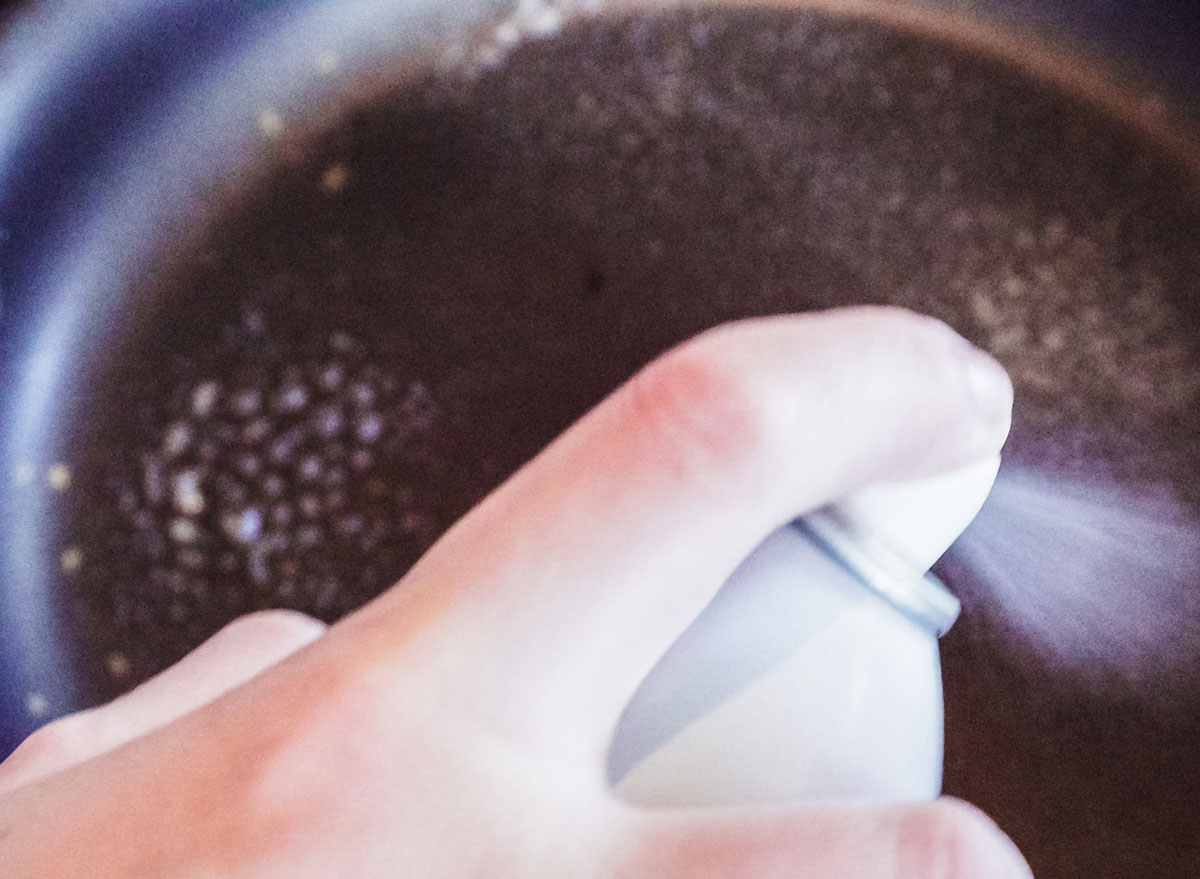
“Many people have olive oil in their pantries and they pour this heart-healthy oil liberally into their pans for cooking and on their salads without thinking about it,” say The Nutrition Twins Lyssie Lakatos, RDN, CDN, CFT and Tammy Lakatos Shames, RDN, CDN, CFT. “Each tablespoon adds 120 calories, so it’s easy to add upwards of 500 calories in a day from oil, which could result in a pound of weight gain each week. Simply spritzing the oil on food can prevent 5 pounds from accumulating on a person’s waistline over the course of a month. If you’re looking to lose a few pounds, this small change can make a big difference.”
Now that you know these tips, here are our favorite 100 Easiest Recipes You Can Make!
